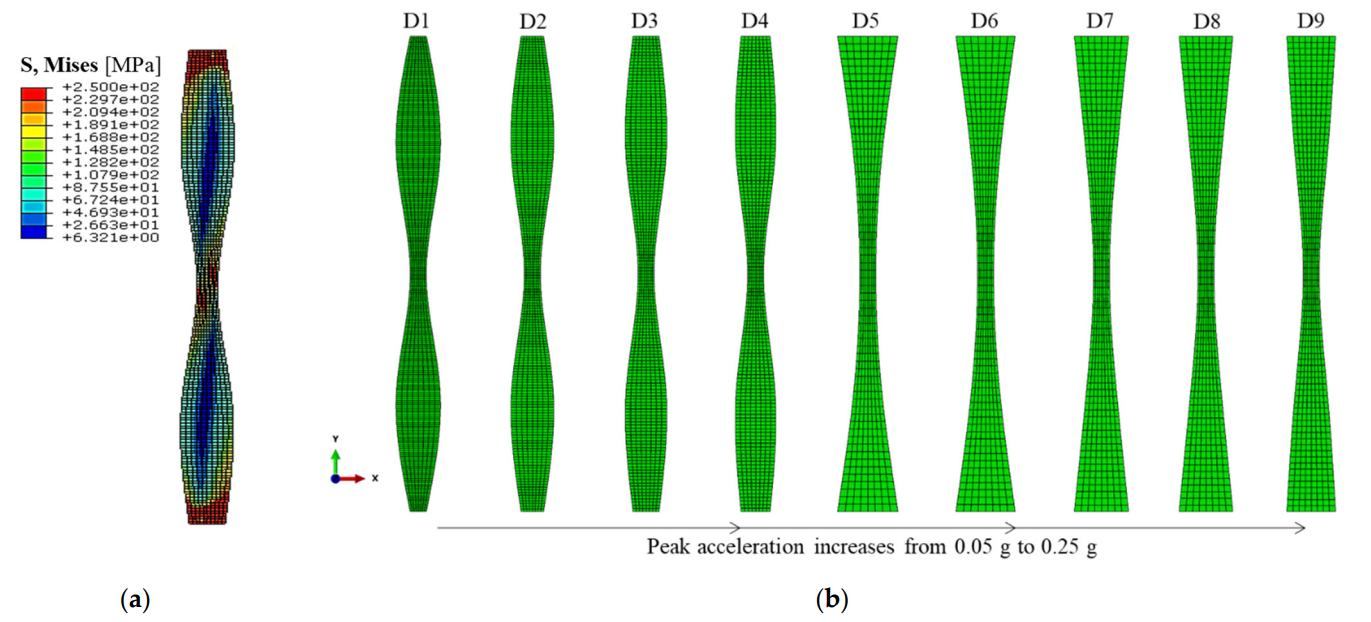[115] Effect of Dynamic Loading Conditions on Maximizing Energy Dissipation of Metallic Dampers
J. W. Park, J. H. Yoon, G. H. Yoon, and Y. M. Lim. Applied Sciences 12, no. 6 (2022): 3086
Diversification of the optimum designs is practical for metallic dampers due to their advantages of low cost, stability, and ease of fabrication. Therefore, this paper presents a novel approach—dynamic optimization—to derive various optimum shapes of metallic dampers that will dissipate the greatest amount of seismic energy. Specifically, this study proposes a conceptual metallic damper for bridges as a target model to investigate and develop the optimization method. First, an optimizing system was constructed by combining an optimization algorithm (sequential quadratic programming, SQP) with finite element analysis. In a conventional optimization process, energy dissipation capability and stiffness of the metallic damper increases under given static loadings. However, the conventional process fails to diversify the optimized shapes and results in less energy dissipated in conditions with relatively small ground motions due to the increased stiffness. Therefore, a novel method with a simple numerical model for dynamic optimization was devised with additional spring sets and concentrated masses. By utilizing this model, the optimized results under relatively high acceleration conditions were similar to the statically optimized cases, while the other cases showed different trends of optimum shapes. These unconventional results demonstrate decreased stiffness in static analysis, but eventually exhibit higher energy dissipation during small earthquakes.
